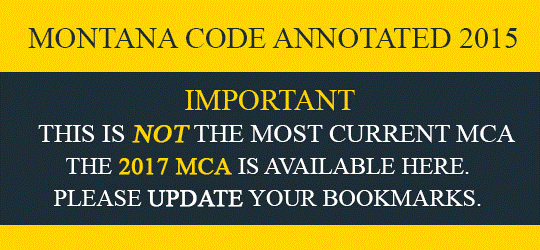



15-6-221. Exemption for rental housing providing affordable housing to lower-income tenants. (1) That portion of residential rental property that is dedicated to providing affordable housing for lower-income persons is exempt from property taxation in any year that:
(a) the property is owned and operated by an entity, including but not limited to a limited partnership, limited liability corporation, or limited liability partnership in which a general partner is a nonprofit corporation exempt from taxation under section 26 U.S.C. 501(c)(3), as amended, and incorporated and admitted under the Montana Nonprofit Corporation Act as provided in Title 35, chapter 2, or is a housing authority as defined in 7-15-4402 and the nonprofit general partner actively participates in accordance with the definition found in 26 U.S.C. 469(i). Section 26 U.S.C. 469(i) is applicable without reference to section 26 U.S.C. 469(i)(6).
(b) the board of housing, established in 2-15-1814, has allocated low-income housing tax credits to the owner under 26 U.S.C. 42, which requires that:
(i) at least 20% of the residential units in the property are rent-restricted, as defined in 26 U.S.C. 42, and rented to tenants whose household incomes do not exceed 50% of the median family income, adjusted for family size, for the county in which the property is located; or
(ii) at least 40% of the residential units in the property are rent-restricted, as defined in 26 U.S.C. 42, and rented to persons whose household incomes do not exceed 60% of the median income, adjusted for family size, for the county in which the property is located;
(c) a deed restriction or other legally binding instrument restricts the property's usage and provides that the units designated for use by lower-income households must be made available to or occupied by lower-income households for the period required to qualify for low-income housing tax credits at rents that do not exceed those prescribed by the terms of the deed restriction or other legally binding instruments;
(d) the property meets a public purpose in providing housing to an underserved population and provides a minimum of 50% of the units in the property to tenants at 50% of the median family income for the area, with rents restricted to a maximum of 30% of 50% of median family income, as calculated under 26 U.S.C. 42; and
(e) the owner's partnership or operating agreement or accompanying document provides that at the end of the compliance period, as that term is defined in 26 U.S.C. 42, the ownership of the property may be transferred to the nonprofit corporation or housing authority general partner as provided for in 26 U.S.C. 42(i)(7).
(2) Prior to the allocation of low-income housing tax credits to the owner, as provided in subsection (1)(b), the unit of local government where the proposed project is to be located shall give due notice, as defined in 76-15-103, and hold a public hearing to solicit comment on whether the proposed qualifying low-income rental housing property meets a community housing need. A record of the public hearing must be forwarded to the board of housing for consideration in granting the allocation of tax credits.
(3) For purposes of this section the following definitions apply:
(a) "Median family income" means the household income, adjusted for family size, determined annually by the United States department of housing and urban development, or its successor agency, to be the median family income for persons residing within each county of the state.
(b) A residential unit is "rent-restricted" if it satisfies the criteria of 26 U.S.C. 42(g)(2).
History: En. Sec. 1, Ch. 452, L. 1999; amd. Sec. 22, Ch. 2, L. 2009.
